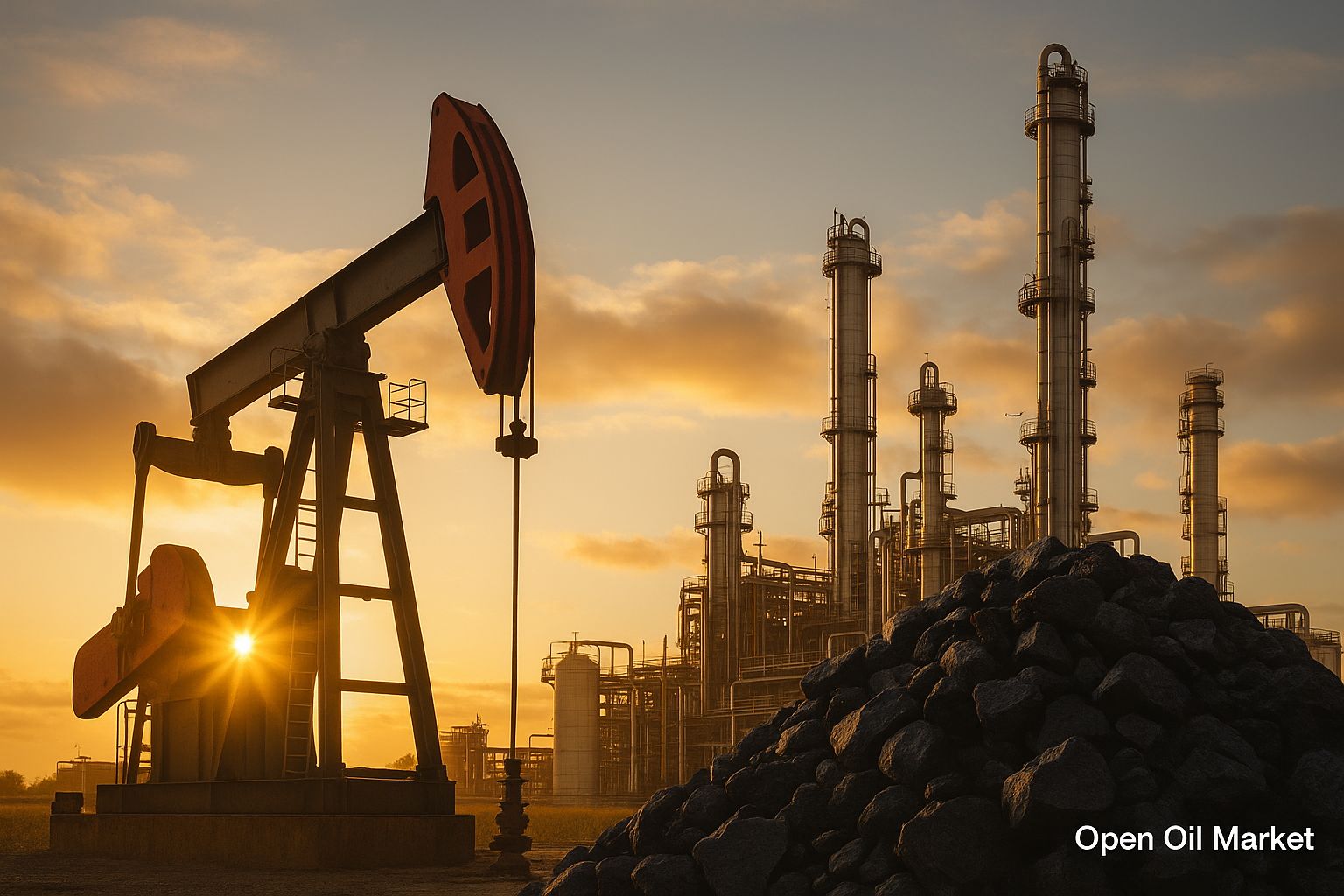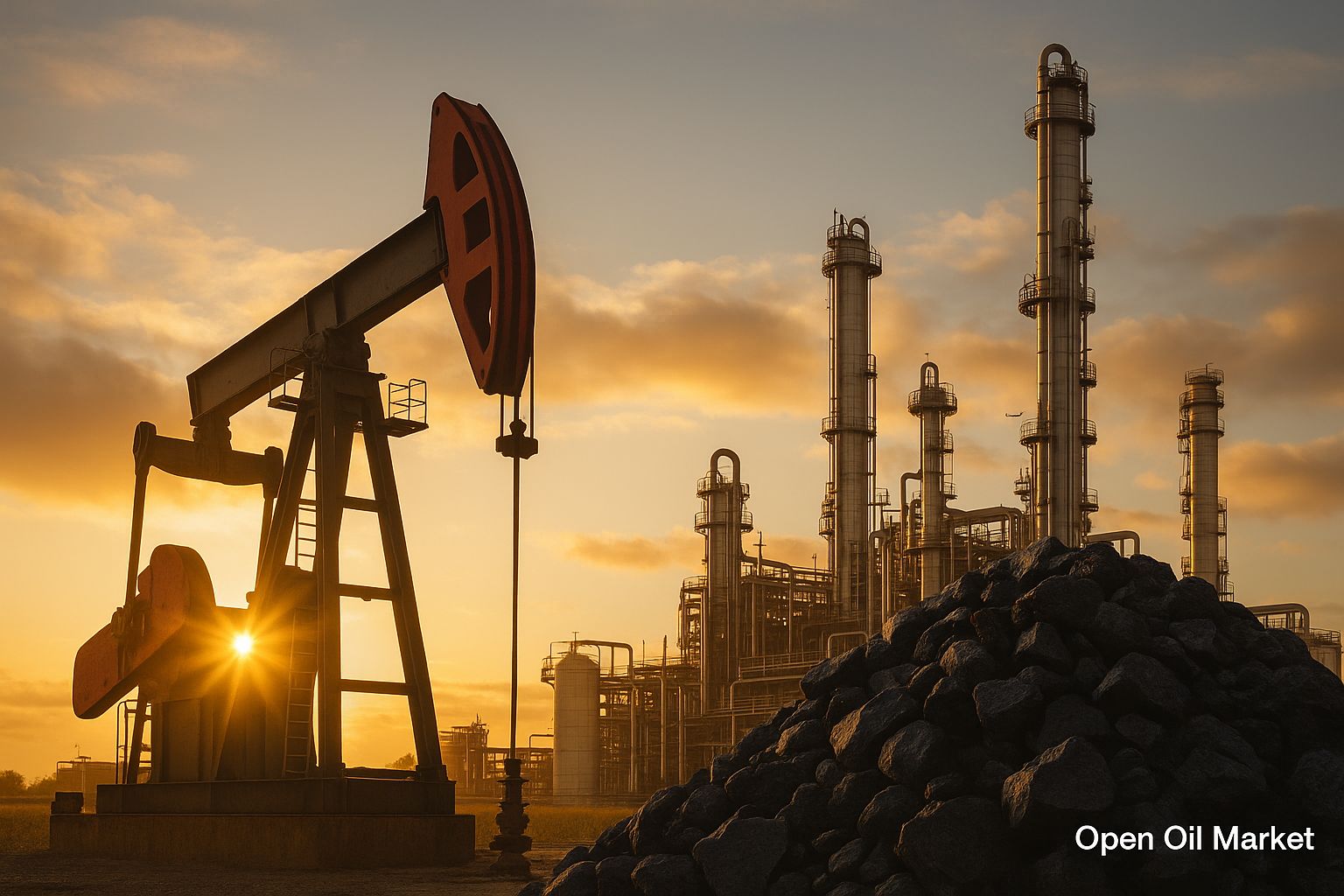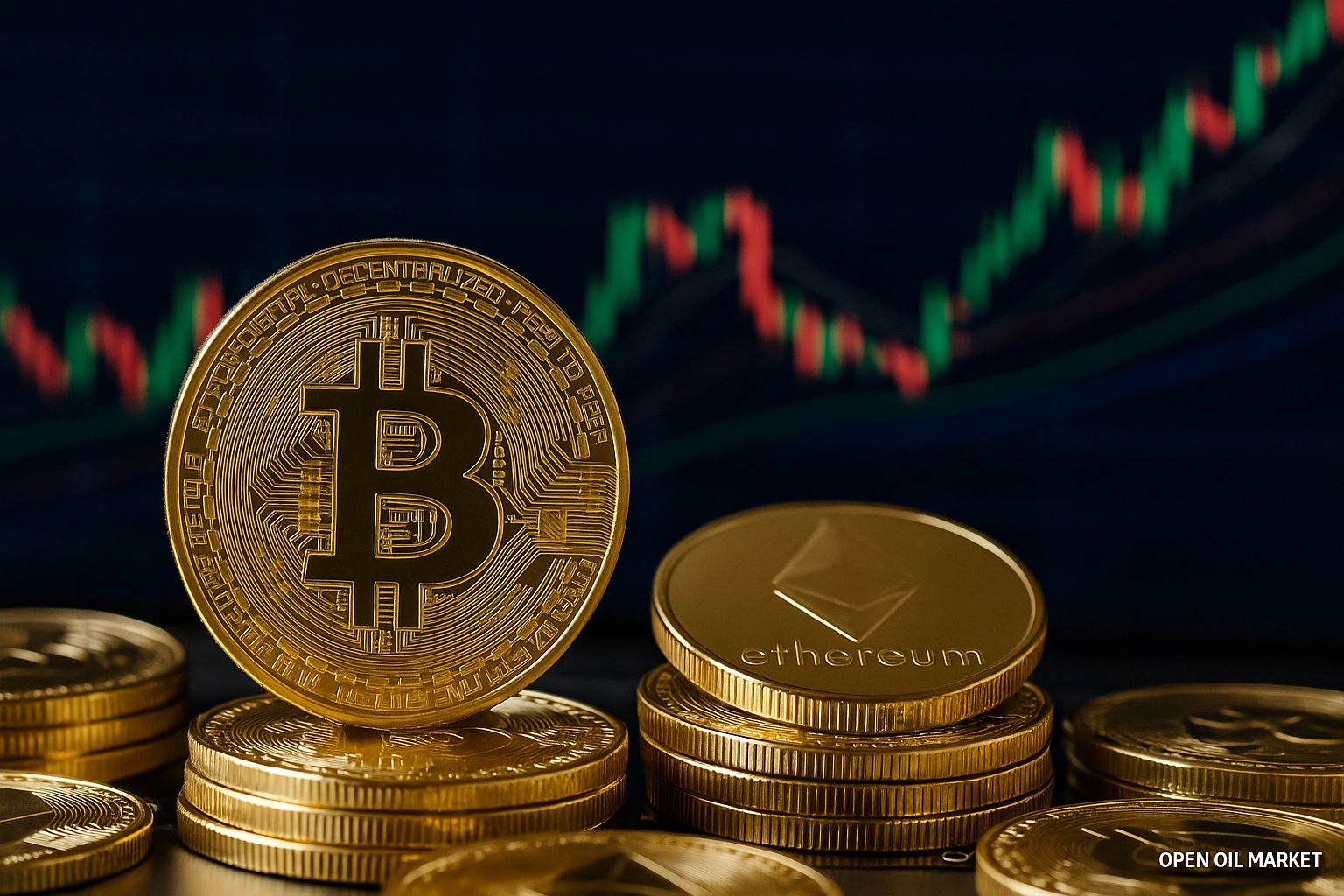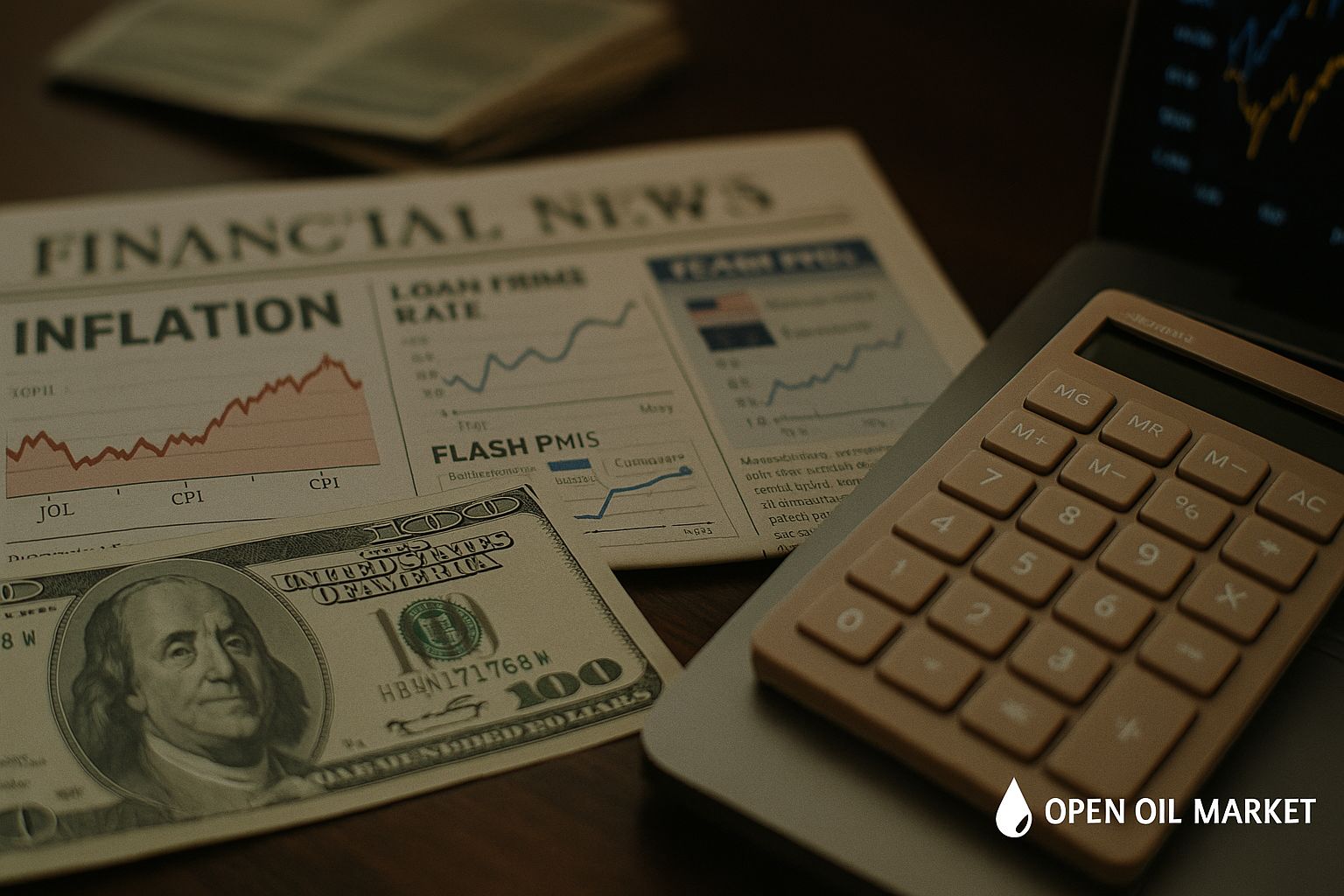
Fuel and Energy Complex (FEC), Oil, Gas, Coal, Electricity, Oil Products, Oil Refineries, Russia, CIS, Energy Market, Sanctions, Geopolitics, Export, Energy Stability
As of August 20, 2025, the agenda of the fuel and energy complex (FEC) is characterized by a combination of geopolitical maneuvers and stable market trends, instilling cautious optimism among investors and market participants. The results of recent negotiations between Russia and the United States have created a favorable backdrop for dialogue, even though no real breakthroughs have been achieved thus far. U.S. President Donald Trump has stated that he does not plan to impose new sanctions against Russia in the near term, providing the market with necessary respite.
Meanwhile, the sanctions standoff is evolving into a new phase: Washington is intensifying pressure on Moscow's partners—particularly India, which has been actively purchasing Russian oil—by canceling planned trade negotiations and imposing increased tariffs on Indian exports at the end of August. At the same time, global energy prices remain relatively stable. Brent crude is hovering around $60 per barrel, reflecting a fragile balance between rising supply and moderate demand. The European gas market remains calm, with gas storage levels in EU countries exceeding 90%, providing a solid reserve ahead of winter and keeping prices stable.
In the meantime, the global energy transition is gaining momentum: various regions are recording new highs in renewable energy (RE) generation, although governments continue to rely on traditional resources for system reliability. In Russia, following an August spike in fuel prices, governmental emergency measures are gradually cooling the market – the situation with gasoline and diesel supply is beginning to stabilize.
Below is a detailed overview of key news and trends in the oil, gas, electricity, and raw materials sectors as of the specified date.
Oil Market: Oversupply and Weak Demand Keeping Prices in Check
Global oil prices remain relatively stable, influenced by fundamental factors. The North Sea benchmark Brent is holding around $65-66 per barrel, while American WTI is around $62-64. The current quotes are approximately 10-15% lower than a year ago, reflecting a gradual market correction following the peaks of the 2022-2023 energy crisis. Several key factors are influencing price dynamics:
- OPEC+ Production Increases. The oil alliance is methodically increasing supply. In August 2025, the combined production quota for key member countries rose by approximately 548,000 barrels per day, with a comparable expansion expected in September. Since spring, production restrictions have been progressively relaxed, leading to an increase in global oil and oil product inventories.
- Slowing Demand Growth. Global oil consumption is growing at more moderate rates. The International Energy Agency (IEA) has lowered its demand growth forecast for 2025 to around +0.7 million barrels per day (for comparison, demand grew by more than 2.5 million b/d in 2023). OPEC's estimates are also modest—around +1.3 million b/d. Reasons include a weakening global economy and the effect of previous high prices encouraging energy conservation. An additional factor is the slowing industrial growth in China, which limits the appetite of the world's second-largest oil consumer.
- Geopolitical Uncertainty. The market is pricing in conflicting risks amid international negotiations. On one hand, the lack of a breakthrough at the U.S.-Russia summit means that sanctions pressure will persist (the EU is simultaneously preparing its 19th sanctions package), supporting a certain "risk premium" in prices. On the other hand, the very fact of ongoing dialogue and a pause in imposing new U.S. sanctions somewhat eases tensions. As a result, oil quotes fluctuate within a narrow range, lacking impetus for either a rally or a collapse.
- Resumption of Supplies from Venezuela. The easing of U.S. sanctions has allowed Chevron to resume limited exports of Venezuelan oil to the global market. Although the volumes of these supplies are small, they contribute to the overall picture of increasing supply and further exert downward pressure on prices.
In aggregate, these factors create a surplus of supply over demand, keeping the oil market in a state close to surplus. Brent quotes firmly remain below last year's highs. A number of analysts believe that if current trends persist, the average price of Brent could drop to $50-55 per barrel by 2026.
Gas Market: Europe on the Brink of Winter with Record Inventories
The European gas market remains in focus, as it confidently prepares for the upcoming heating season. EU countries are rapidly filling underground storage facilities, with their capacity already exceeding 90%—significantly ahead of traditional deadlines. These record inventories provide a strong reserve ahead of winter and keep prices at moderate levels. European consumers are feeling relieved compared to last year's concerns: diversification of supply (through LNG from the U.S. and the Middle East instead of Russian pipeline gas) has helped avoid shortages. Unless there is extremely cold weather or new unforeseen events, the current situation allows for expectations of a smooth fall-winter period without sharp price spikes.
International Politics: Balancing Negotiations and Sanctions
External political factors continue to significantly impact the energy sector. On August 15, a meeting took place in Anchorage, Alaska, between leaders from Russia and the U.S., resulting in an agreement to continue dialogue on several issues. A few days later, on August 18, negotiations involving the President of Ukraine and EU representatives took place in Washington, aimed at finding steps to resolve the conflict. The U.S. stated its readiness to provide security guarantees to Ukraine; however, no specific agreements regarding peace have been reached, maintaining uncertainty.
Following the meetings, Donald Trump refrained from immediately intensifying sanctions pressure on Russia, although he did not rule out such a move in the coming weeks if no progress occurs. At the same time, Washington has shifted some of the sanctions pressure onto Moscow's allies: starting August 27, additional import tariffs (up to 50%) on a range of goods from India will be imposed in response to New Delhi's continued purchases of Russian oil. The White House made it clear that India's current level of cooperation with Russia in energy resources is unacceptable. The EU, for its part, is preparing its 19th sanctions package against Russia, signaling an intention to continue limiting the export of Russian oil and gas. Overall, the combination of ongoing negotiations and new sanctions steps creates a conflicting backdrop: on one hand, there is hope for a partial thaw in relations; on the other, sanctions pressure remains an important factor of uncertainty for the market.
Asia: India and China – Balancing Imports with Domestic Production
- India. Facing sanctions pressure, New Delhi has made it clear that a sharp reduction in imports of Russian oil and gas is unacceptable due to the critical role these supplies play in national energy security. Indian refiners have secured favorable conditions: Russian companies are being forced to offer them additional discounts (around $5 off Brent prices) on Urals crude to maintain the Indian market. Consequently, India continues to actively purchase Russian oil under preferential conditions and is increasing its import of oil products from Russia to meet rising demand. At the same time, pressure from the West is increasing: the U.S. has canceled planned trade consultations with India and is imposing increased customs duties (in some cases up to 50%) on a range of Indian goods starting August 27 in response to New Delhi's cooperation with Moscow in the oil sector. Washington has stated that India's purchases of Russian oil must be significantly reduced. Simultaneously, India is taking steps to reduce its long-term dependence on imported energy resources. Prime Minister Narendra Modi announced on Independence Day (August 15) the launch of a national program for the exploration of deep-sea oil and gas deposits. As part of this, the state corporation ONGC began drilling ultradeep wells (up to 5 km) in the Andaman Sea, with initial results being considered promising. This "deep-sea mission" aims to stimulate the discovery of new hydrocarbon reserves and bring India closer to its goal of energy independence.
- China. As the largest economy in Asia, China is also increasing its energy imports while simultaneously boosting domestic production. Chinese importers remain the leading buyers of Russian oil and gas; Beijing has not joined the Western sanctions and has taken advantage of the situation by continuing to import raw materials at favorable prices. According to China's customs statistics, in 2024, the country imported around 212.8 million tons of oil and 246.4 billion cubic meters of natural gas – increases of 1.8% and 6.2% compared to the previous year. In 2025, imports continue to grow, albeit at a more moderate pace due to high baselines. At the same time, Beijing is stimulating its own oil and gas production: from January to July 2025, national companies extracted 126.6 million tons of oil (+1.3% compared to the previous year) and 152.5 billion cubic meters of gas (+6%). The growth of domestic production partly covers increased demand but does not eliminate the need for imports. Chinese authorities continue to invest in the development of fields and enhanced oil recovery technologies. Given the scale of the economy, China's dependence on energy resource imports will remain significant: analysts estimate that in the coming years the country will import at least 70% of its consumed oil and nearly 40% of its gas. Unlike India, Beijing is currently avoiding direct sanctions pressure from the West, allowing it to enjoy the benefits of Russian-Chinese energy trade without hindrance.
Thus, the two largest Asian consumers—India and China—continue to play a key role in global raw materials markets, balancing the supply of foreign resources with the development of their own resource bases.
Energy Transition: Records in RE and the Role of Traditional Generation
The global shift to clean energy is accelerating rapidly. In European countries, the total generation of electricity from solar and wind power plants exceeded generation from coal and gas-fired plants for the first time in 2024. This trend continues in 2025: the introduction of new RE capacities is increasing the share of "green" electricity, while coal's role in the EU's energy balance is diminishing (after a temporary rise during the 2022-2023 crisis). In the U.S., renewable energy has also reached record levels—by early 2025, more than 30% of all generation came from RE, with the combined volume of wind and solar energy production surpassing that from coal plants for the first time. China, as the world's leader in installed RE capacities, annually adds tens of gigawatts of new solar panels and wind turbines, continuously updating its records for "green" electricity. According to the IEA, global investments in the energy sector are expected to exceed $3 trillion in 2025, with more than half of this amount directed toward RE projects, grid modernization, and energy storage systems.
At the same time, energy systems continue to rely on traditional generation for stability. The increasing share of solar and wind creates challenges for network balancing during periods when RE does not generate energy (at night or during calm weather). To cover peak demand and hold reserve capacity, operators sometimes have to ramp up production at gas and even coal-fired plants. For example, in some regions of Europe during last winter's prolonged calm periods, coal plants were temporarily brought back online despite environmental concerns. To enhance energy supply reliability, governments are investing in energy storage systems (industrial batteries, pumped storage plants) and "smart" grids capable of flexibly responding to generation fluctuations. Experts predict that by 2026-2027, renewable sources may emerge as the leading global electricity producers, ultimately surpassing coal. However, in the next few years, there remains a need to keep some conventional power plants on standby as a safeguard against outages. Thus, the energy transition is reaching new heights but requires a delicate balance between "green" technologies and traditional resources.
Coal: Steadily High Demand and Moderate Prices
Despite the rapid development of renewable energy, the global coal market continues to rely on high demand and remains an important part of the global energy balance. Coal consumption is particularly high in the Asia-Pacific region, where economic growth and energy production needs support intensive use of this fuel. China, the world's largest consumer and producer of coal, is burning coal at levels close to record highs in 2025. Chinese mines produce over 4 billion tons of coal annually, barely enough to meet peak demand (for instance, during hot summer months with widespread use of air conditioning). India, endowed with significant reserves, is also increasing its use of coal: more than 70% of the country's electricity is generated from coal-fired plants, and absolute consumption is growing along with the economy. Other developing Asian countries (Indonesia, Vietnam, Bangladesh, etc.) are also implementing projects to build new coal-fired power plants to meet the rising demand of their populations and industries.
Supply in the global coal market has adapted in recent years to meet high demand. Major exporters—Indonesia, Australia, Russia, and South Africa—have increased coal production and exports, causing prices to return to more normal levels following spikes in 2022 and currently fluctuate within a narrow range. The balance between supply and demand appears well-balanced: consumers are obtaining necessary fuel, while producers enjoy stable sales at profitable prices. Although many nations declare plans to gradually reduce coal usage for climate goals, in the short term, this resource remains indispensable for supplying energy to billions of people. Experts generally agree that in the next 5-10 years, coal generation, particularly in Asia, will maintain a significant role despite global decarbonization efforts. In other words, the coal sector is currently experiencing a period of relative equilibrium: demand remains high, prices are moderate, and the sector continues to be one of the pillars of global energy.
Russian Oil Products Market: Government Measures Stabilize the Situation
In the domestic fuel market of Russia, signs of stabilization have emerged following a sharp spike in prices at the beginning of August, thanks to rapid government intervention. In the first weeks of the month, wholesale exchange prices for gasoline and diesel fuel reached historical highs, surpassing even the peaks of 2023. Amid the extraordinary summer demand (due to the vacation season and an active harvest campaign), limited fuel supply led to local shortages and speculative price hikes. Additional negative contributions came from unplanned stoppages at several refineries due to accidents and drone attacks, which reduced gasoline output. The government responded swiftly to the crisis with a set of measures aimed at normalizing the situation.
- Extension of Fuel Export Ban. The total export ban introduced at the beginning of August on motor gasoline and diesel fuel has been extended until the end of September and is now applied to all producers—including vertically integrated oil companies. This measure increases supply in the domestic market by volumes that previously went for export.
- Partial Resumption of Exports in October. It is planned that as the situation stabilizes, the largest oil refineries will be allowed to partially resume exports starting in October. However, for independent oil bases, traders, and small refineries, the export embargo will likely remain until full normalization of supplies.
- Enhanced Control Over Fuel Distribution. Authorities have tightened monitoring of oil product distribution within the country. Factories are required to prioritize the needs of the domestic market and avoid mutual exchange purchases that previously drove prices up. The Ministry of Energy, along with the Federal Antimonopoly Service and the St. Petersburg International Commodity and Raw Materials Exchange, is developing a transition to direct contracts between refineries and sales companies, bypassing exchange mechanisms, to eliminate unnecessary intermediaries.
- Subsidies and Dampening Mechanism. The government is providing financial compensation to oil companies—in the form of budget subsidies and reverse excise taxes ("dampers")—to compensate them for part of the lost export revenues and encourage the redirection of sufficient volumes of gasoline and diesel to the domestic market.
The sum of the measures taken aims to stabilize prices and prevent fuel shortages for consumers. The extension of the export ban is expected to direct an additional 200,000-300,000 tons of gasoline and diesel to the domestic market in the coming month (approximately the volumes that were previously exported monthly). At the same time, the provided subsidies support the profitability of supplies to gas stations domestically. Authorities have stated that they will act preemptively: if the situation requires, restrictions on the export of oil products will be extended again, and fuel from reserves will be swiftly directed to regions in need.
Currently, the "fuel crisis" is being managed: despite extreme wholesale prices, retail prices at gas stations have increased by about 5% since the beginning of the year—close to the general level of inflation. The government intends to avoid a repeat of last year's scenario, when a sharp price hike affected drivers and agricultural workers significantly in certain regions. Presently, most gas stations are adequately supplied with fuel, and the measures implemented are gradually cooling the wholesale fuel market. Monitoring of the situation continues at the highest levels—relevant agencies and the government are ready to introduce new mechanisms to ensure stable fuel supply for the country and keep prices for end consumers within acceptable limits.
OPEN OIL MARKET Telegram Channel – Daily Analytics for the FEC Market
To stay informed about current events and trends in the fuel and energy complex, subscribe to our Telegram channel @open_oil_market. There, you will find daily reviews, industry insights, and only verified facts without unnecessary informational noise—everything essential for investors and specialists in the FEC in a handy format.




